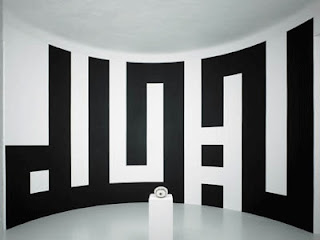Here’s the 1973 L.O.V.E. stamp.
This is a sculpture by Robert Indiana. Created in a time when the United States was consumed by the Vietnam War, LOVE became a symbol for Peace. This famous sculpture is one of the most celebrated works within the pop art movement.
Marc Bijl, Porn, 2002
Aldo Chaparro, 2008
General Idea's famous AIDS logo, an appropriation of Robert Indiana's
LOVE sign of the 1960s. The artists created the logo as a form of
branding, and then applied it to media and advertising strategies,
calling the infiltrations that followed Imagevirus.
AIDS - Amsterdam Tram Project, 1990
62,5 x 63,7 cm
poster / screenprint on sticker
edition 40, handwritten title 'Amsterdam Tram Project'
* In 1990 trams in Amsterdam were covered with large AIDS silkscreen stickers of General Idea. The 'Amsterdam Tram Project' became quite controversial, i.e. conductors refused to drive their trams covered with the colourful and marked stickers afraid of giving their support to or at least being compromised and associated with homosexuality.
In the mid-1980's, the Canadian art group General Idea - AA Bronson, Felix Partz, and Jorge Zontal - created a symbol using the acronym AIDS, using the letters in a manner that resembled Robert Indiana's LOVE logo. This became part of Imagevirus, a project of paintings, sculptures, videos, posters, wallpapers and exhibitions that investigated the term AIDS as both word and image, using the mechanism of viral transmission. Imagevirus spread like a visual virus, producing an image epidemic in urban spaces from Manhattan to Sydney. It was displayed as, among other things, a Spectacolor sign in Times Square, a sculpture on a street in Hamburg, and a poster in the New York subway system. General Idea felt compelled to make Imagevirus at a time when AIDS was emerging as a global epidemic affecting gay men disproportionately.
Museum Fodor Amsterdam issued the posters in a signed and numbered edition.





























